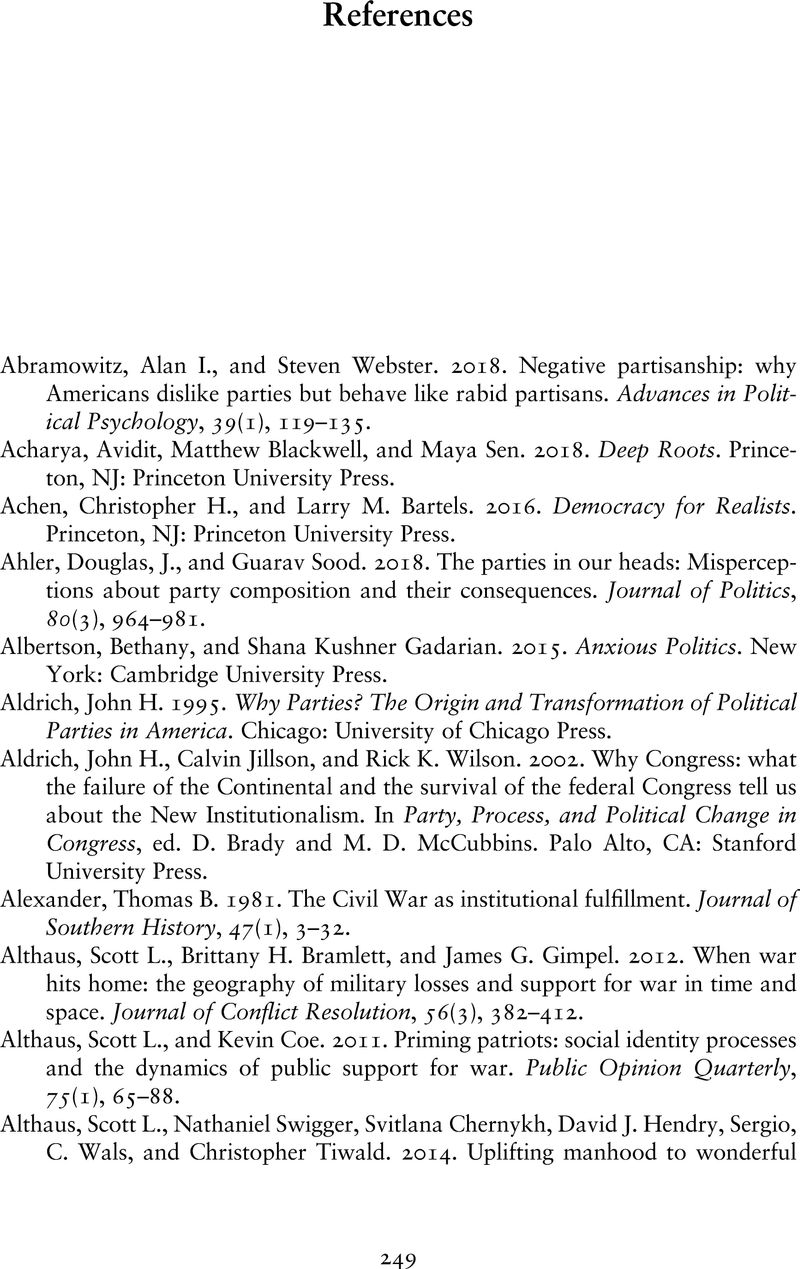Book contents
- With Ballots and Bullets
- With Ballots and Bullets
- Copyright page
- Dedication
- Epigraph
- Contents
- Figures
- Tables
- Acknowledgments
- Preface
- 1 An Introduction to Partisan Warfare
- 2 The Roots of Partisan Civil War
- Part I Mobilizing Partisan Warfare
- Part II Ballots in a Partisan Civil War
- Part III Legacies of Partisan Violence
- Conclusion
- Notes
- References
- Index
- References
References
Published online by Cambridge University Press: 20 October 2020
- With Ballots and Bullets
- With Ballots and Bullets
- Copyright page
- Dedication
- Epigraph
- Contents
- Figures
- Tables
- Acknowledgments
- Preface
- 1 An Introduction to Partisan Warfare
- 2 The Roots of Partisan Civil War
- Part I Mobilizing Partisan Warfare
- Part II Ballots in a Partisan Civil War
- Part III Legacies of Partisan Violence
- Conclusion
- Notes
- References
- Index
- References
Summary

- Type
- Chapter
- Information
- With Ballots and BulletsPartisanship and Violence in the American Civil War, pp. 249 - 266Publisher: Cambridge University PressPrint publication year: 2020



